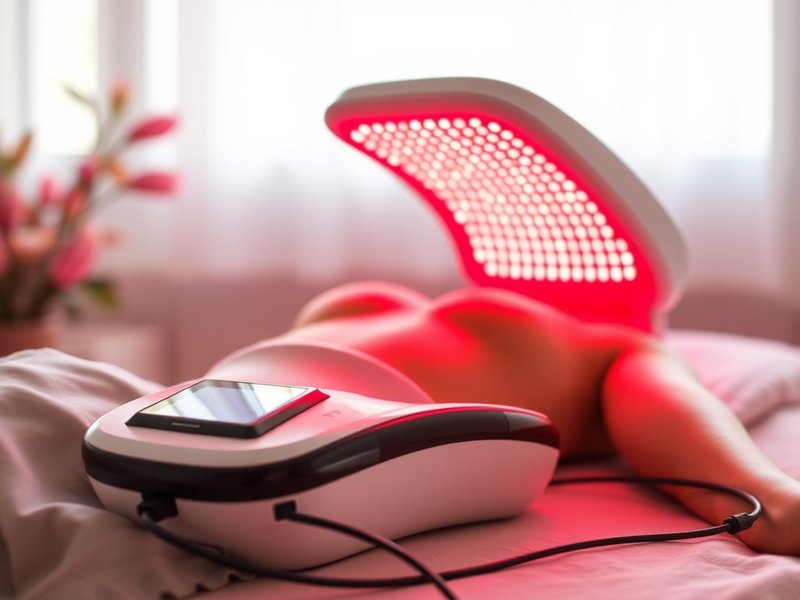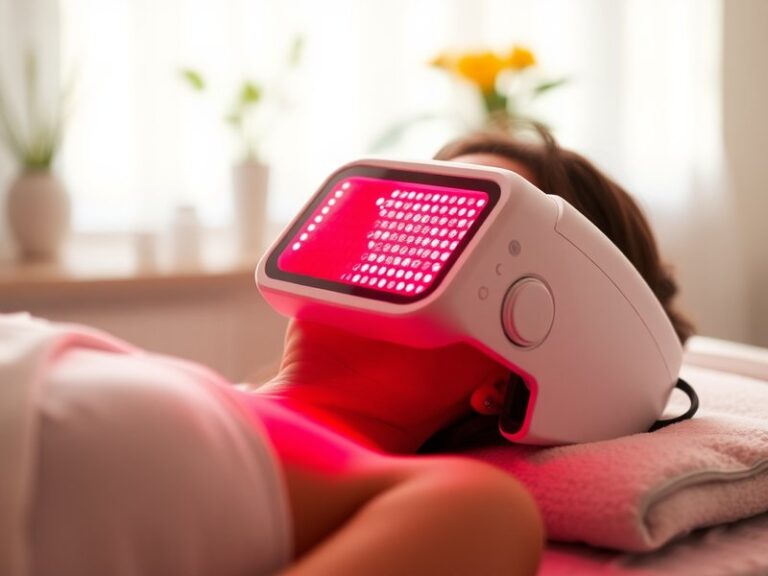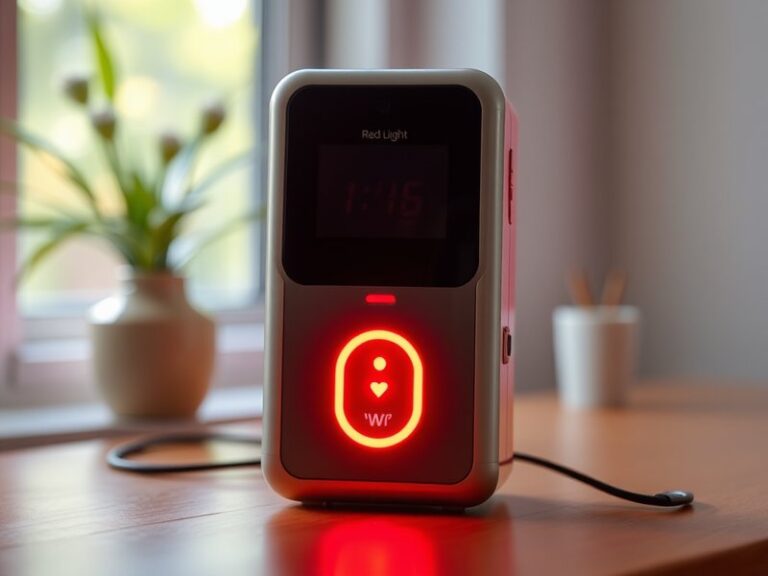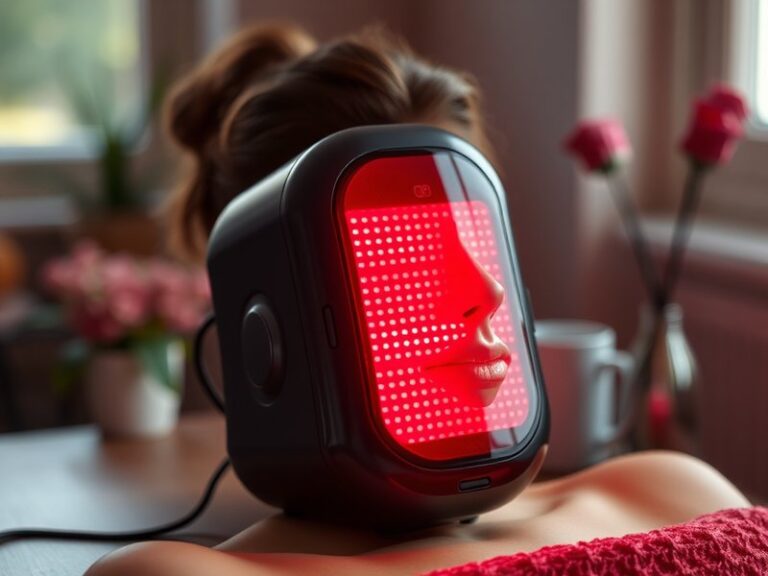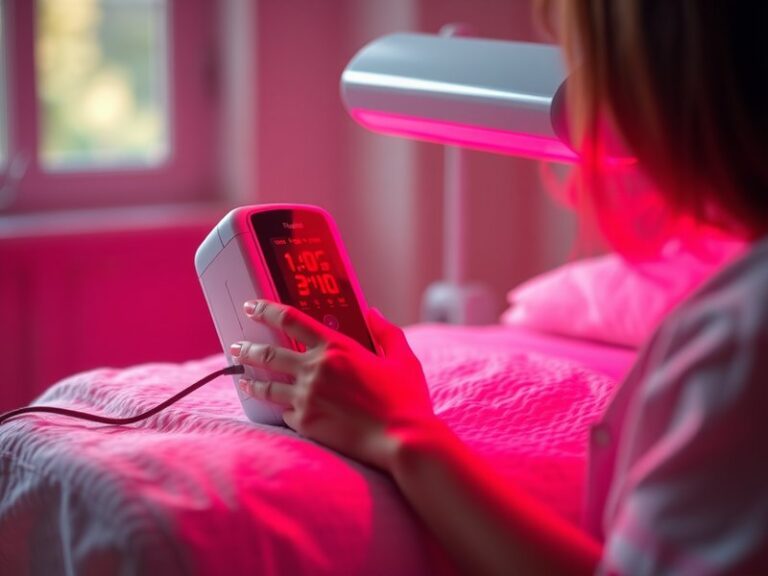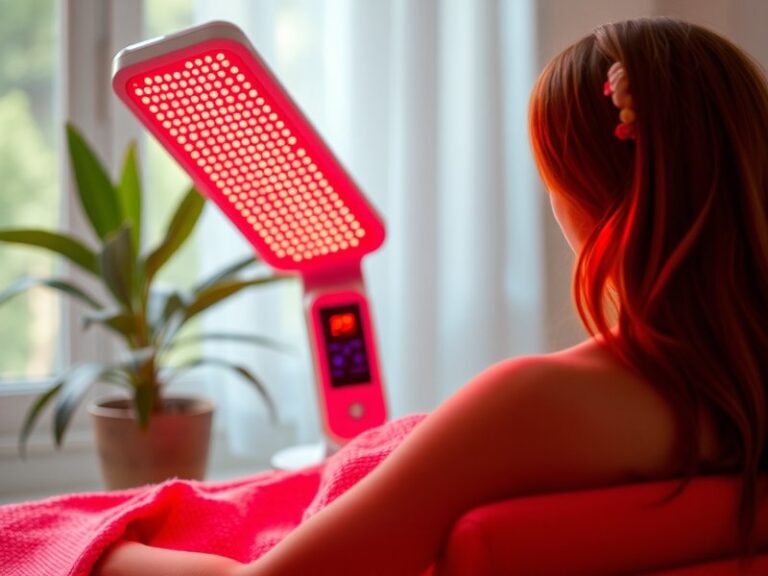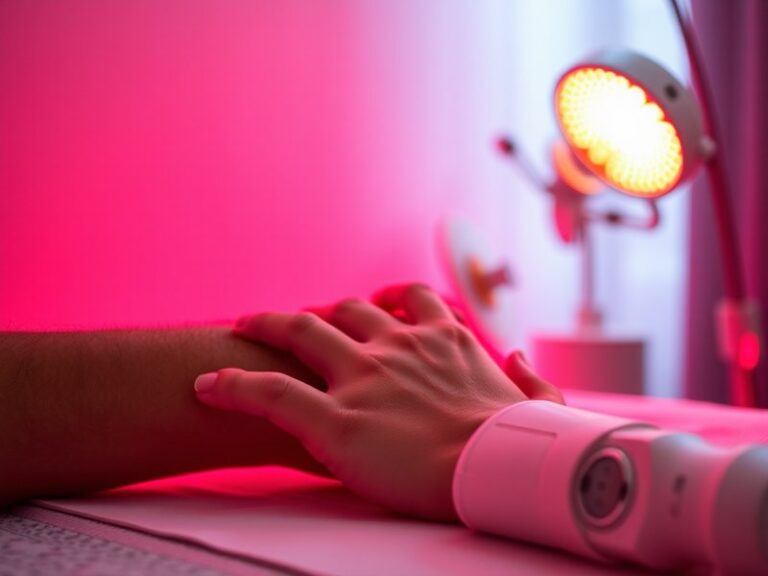Does Red Light Therapy Lose Weight?
Does Red Light Therapy Lose Weight?
Is it possible for light to help you shed those extra pounds?
In recent years, red light therapy (RLT) has gained traction as a potential aid for weight loss. This article will explore what red light therapy is, its purported benefits, how it might influence weight loss, and alternative approaches that can complement or substitute for this treatment.
See what we think about Can I do red light therapy with makeup?
Key Takeaways
- Red light therapy is believed to stimulate fat cell metabolism and improve cellular function.
- While research exists supporting RLT’s role in weight loss, results can vary from person to person.
- It is essential to consider that RLT should not replace traditional weight loss methods like diet and exercise.
What is Red Light Therapy?
Red light therapy is a non-invasive treatment that uses low-level wavelengths of red light, typically between 600 and 1,000 nanometers. This therapy aims to enhance cellular function and metabolism. It has been used for various applications, including skin treatment and pain relief, and more recently, weight loss.
RLT works by penetrating the skin, which stimulates the mitochondria in cells. Mitochondria are responsible for producing energy; thus, when activated, they may enhance energy production and transportation within the body, which can potentially influence weight management.
What are the Benefits of Red Light Therapy?
The benefits of red light therapy extend beyond just potential weight loss. Understanding these benefits can provide insight into how RLT might assist in achieving overall health goals.
Enhanced Fat Metabolism
Red light therapy may enhance the metabolism of fat cells. Research suggests RLT can stimulate lipolysis, the process by which fat cells break down fat for energy. This metabolic boost might assist in weight management when combined with a balanced diet.
Improved Recovery and Reduced Inflammation
RLT is well-known for its anti-inflammatory properties. By reducing inflammation, it aids recovery from exercise, allowing individuals to maintain a consistent workout routine vital for weight loss.
Boosted Mitochondrial Function
As mentioned earlier, RLT enhances mitochondrial function. Increased cellular energy production could contribute to better overall physical performance, making it easier for individuals to engage in more rigorous exercises.
Potential Mood Enhancement
Some studies suggest that red light therapy may have positive effects on mood and well-being. By helping alleviate stress and anxiety, individuals may feel more motivated to maintain healthy habits conducive to weight loss.
Is it Possible to Lose Weight with Red Light Therapy?
While some anecdotal evidence and preliminary studies suggest a link between red light therapy and weight loss, the overall scientific consensus is still evolving. Factors such as individual metabolism, diet, and exercise levels can significantly impact results. Therefore, RLT should be viewed as a complementary tool rather than a standalone solution.
What are the Advantages of Using Red Light Therapy for Weight Loss?
Using red light therapy for weight loss offers several potential benefits.
Non-Invasive Treatment
RLT is a non-surgical approach, making it an appealing option for those hesitant about invasive procedures. The treatment is painless and typically has very few side effects.
Convenient and Accessible
With numerous devices available for home use, red light therapy has become increasingly accessible. Users can incorporate it into their daily routines without requiring significant time commitment.
Supports Overall Health
Using RLT not only may help with weight loss but may also improve skin health, reduce pain, and enhance recovery. This multifaceted benefit can provide a comprehensive approach to well-being.
Cost-Effectiveness
Compared to some weight loss programs and medications, RLT can be a more cost-effective option over time.
What are the Disadvantages of Using Red Light Therapy for Weight Loss?
While there are benefits, it is essential to weigh the challenges and limitations of red light therapy for weight loss.
Inconsistent Scientific Evidence
Research on RLT and weight loss is still in its infancy. Many studies are small, and results can be inconsistent. This means that its efficacy as a weight loss tool isn’t fully established.
Individual Variation
Responses to RLT can vary greatly between individuals. Some may see results, while others may notice little to no change, depending on factors like body composition and adherence to lifestyle practices.
Not a Substitute for Lifestyle Changes
RLT should complement, not replace, traditional weight loss methods such as dietary changes and regular physical activity. Relying solely on RLT could lead to disappointing results without accompanying lifestyle modifications.
What are the Things to Consider Before Using Red Light Therapy?
Before starting red light therapy for weight loss, certain considerations should be taken into account.
Consult a Healthcare Professional
Always consult a healthcare provider before starting any new treatment, especially for weight loss. They can provide tailored advice and ensure it aligns with your overall health strategy.
Set Realistic Expectations
While RLT shows promise, it is not a miracle solution. Set achievable goals when incorporating it into your routine and remember to combine it with healthy lifestyle choices.
Evaluate Your Budget
Consider the costs associated with red light therapy devices or sessions. Ensure it fits your budget, as prices can vary widely.
Lifestyle Compatibility
Ensure that red light therapy fits seamlessly into your lifestyle. Consider factors like time constraints and feathering it into existing health routines for optimal success.
See the whole article Can Red Light Therapy Aid Weight Loss?
What are the Alternatives to Red Light Therapy for Weight Loss?
If red light therapy is not the best fit for you, numerous alternatives can aid in your weight loss journey.
Dietary Changes
Adopting a balanced diet rich in whole foods can significantly impact weight loss. Focus on lean proteins, fruits, vegetables, and whole grains while minimizing processed foods.
Exercise Regimen
Engaging in a consistent exercise routine is one of the most effective ways to lose weight. Incorporating a mix of cardiovascular, strength training, and flexibility exercises can help achieve optimal results.
Behavioral Therapy
Weight loss can often benefit from the psychological aspect of behavior change. Working with a therapist or joining support groups can help you modify eating habits and promote healthier lifestyle choices.
Natural Supplements
Several natural supplements may aid weight loss, such as green tea extract or glucomannan. However, it’s crucial to consult a doctor before adding any supplements to your routine.
Conclusion: Is it Recommended to Use Red Light Therapy for Weight Loss?
Red light therapy presents an intriguing option for those seeking to enhance their weight loss journey. While it may offer benefits such as enhanced fat metabolism and improved energy levels, it is not a replacement for traditional methods like diet and exercise. As with any treatment, informed decisions based on research, professional advice, and personal health goals are essential.
Frequently Asked Questions
Can red light therapy help with weight loss alone?
Red light therapy alone is unlikely to result in significant weight loss. It is best used as a complementary treatment alongside proper diet and exercise.
Are there any side effects associated with red light therapy?
Generally, red light therapy is considered safe with few side effects. Some users may experience mild skin irritation or temporary redness.
How often should I use red light therapy for weight loss?
Frequency can vary based on the device used and individual goals. Consulting a healthcare provider for personalized recommendations is advisable.
Is red light therapy suitable for everyone?
Although many people can benefit from RLT, those with specific medical conditions (e.g., photosensitivity) should consult a healthcare professional before use.
What type of red light therapy device is most effective?
There are various RLT devices, such as handheld units, panels, and saunas. The effectiveness can depend on the wattage, wavelength, and recommended usage. Researching and possibly consulting users’ experiences can help determine the best option.
